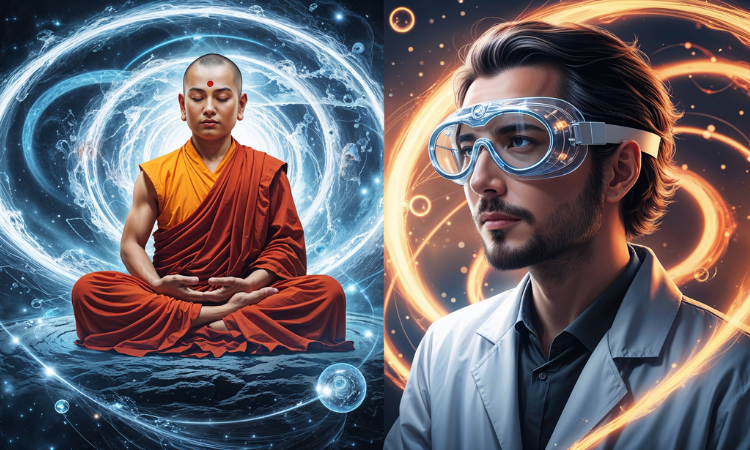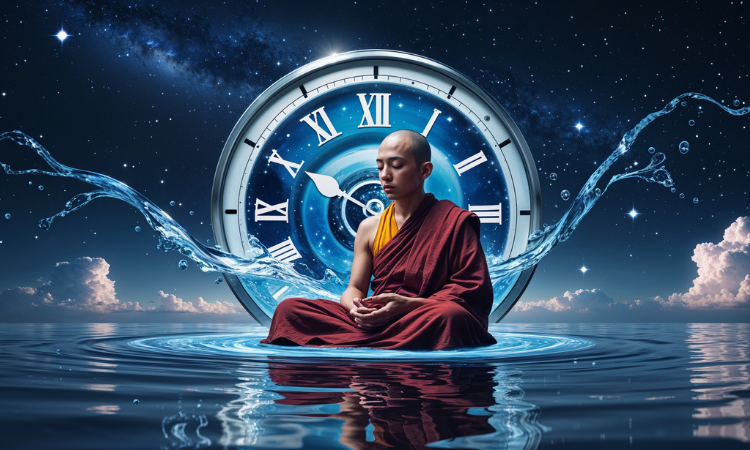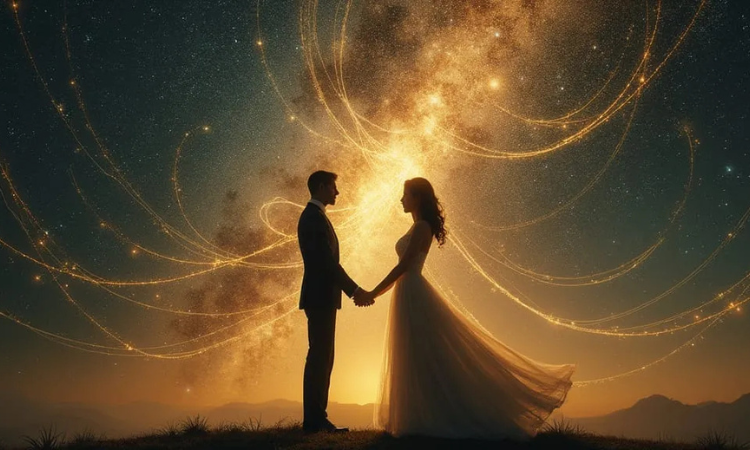The Tao of Physics Review: Why This Book Blew My Mind
The Tao of Physics by Fritjof Capra changed how I see the world. No joke. It made me rethink reality itself.
Capra doesn’t just compare science and spirituality—he shows how they speak the same language.
And trust me, that’s not something you see every day.
This article dives deep.
I’ll walk you through the main ideas, personal takeaways, and why this book matters—especially today.

What Is The Tao of Physics Really About?
Let’s get straight to the point. The Tao of Physics explores the similarities between modern physics and Eastern spiritual traditions.
Capra argues that quantum physics and mysticism both reveal a deeply connected, non-material universe.
He’s not saying they’re exactly the same—but they rhyme in powerful ways.
He dives into quantum theory, relativity, and particle physics.
Then, he connects them with Taoism, Buddhism, and Hinduism.
He uses simple language and clear metaphors to explain complex science.
And surprisingly? It works.
Capra’s goal isn’t to blend science and religion into one thing. Instead, he invites us to notice the parallels.
The shared awe. The wonder. The mystery.
This book is about patterns—how the universe dances in rhythms that both physicists and sages have tried to describe.
And the more you read, the more you feel it: maybe we’ve always been talking about the same truth, just in different tongues.

Quantum Physics and Mysticism
Not So Different After All
Quantum physics is weird. Things pop in and out of existence. Observers affect outcomes. Time and space get stretchy.
Eastern mysticism? Equally weird. Everything’s one. The self is an illusion. Time isn’t linear.
Capra lines these ideas up side by side. Suddenly, quantum weirdness seems… familiar.
He shows that ancient mystics described what physicists are only now discovering. That’s not just coincidence. That’s insight.
Take the Heisenberg Uncertainty Principle, for example. It says we can’t know both position and momentum at the same time. The act of measuring changes the outcome.
Now, think about the Zen teaching of non-duality. That we can’t split reality into rigid categories. That truth slips through grasping hands.
Same idea, different language.
Capra argues that both science and mysticism are pointing to the same mystery. Not to explain it away—but to honor it. To live in it.
That’s what got me hooked. That thrill of connection. That moment of realizing: Whoa, maybe the scientists and sages have been on the same quest all along.
It’s not about proving religion with science. It’s about listening. Paying attention. Finding unity in difference.
Quantum physics is weird. Things pop in and out of existence. Observers affect outcomes. Time and space get stretchy.
Eastern mysticism? Equally weird. Everything’s one. The self is an illusion. Time isn’t linear.
Capra lines these ideas up side by side. Suddenly, quantum weirdness seems… familiar.
He shows that ancient mystics described what physicists are only now discovering. That’s not just coincidence. That’s insight.

The Dance of Energy: Everything is Movement
Capra uses the image of a cosmic dance. Particles aren’t tiny balls. They’re patterns. Vibrations. Waves of possibility.
Everything moves. Nothing stays still. Reality hums with motion.
This reminds me of the Taoist concept of flow. Wu Wei. Effortless action. Everything in harmony.
Modern physics talks about energy fields. Invisible waves that shape all matter. Taoism speaks of the Tao—the ultimate force behind everything.
The dance isn’t random. It follows patterns. Like a rhythm. Like breath.
Capra helps you see matter as music. Not static stuff. But flowing, pulsing energy. That’s a huge shift in perspective.
It makes you feel less alone. You’re not a separate object. You’re part of the rhythm. Always moving. Always connected.
Different words. Same message.
We’re energy. We’re part of the dance. Always were.
Capra uses the image of a cosmic dance. Particles aren’t tiny balls. They’re patterns. Vibrations. Waves of possibility.
This reminds me of the Taoist concept of flow. Wu Wei. Effortless action. Everything in harmony.
Modern physics talks about energy fields. Taoism speaks of the Tao—the ultimate force behind everything.
Different words. Same message.
The Illusion of Separation: There Is No “Other”
This hit me hard. Capra explains how, at the quantum level, nothing is truly separate.
Particles get entangled. A change in one instantly affects the other, even light-years apart.
That’s not science fiction. It’s science fact.
Mystics have said this for centuries. We’re all connected. No borders between mind and matter, self and world.
Think about that. No real division between you and the sky. Or your thoughts and your body.
Capra ties this back to Eastern teachings. The Tao, for example, flows through everything. It doesn’t split reality into pieces. It connects.
Buddhist and Hindu texts say the self is an illusion. That we’re not separate drops, but part of the same ocean.
Quantum entanglement backs that up—just in lab terms instead of poetry.
When I read this, I actually paused. Let it sink in. It felt… true.
It also felt freeing. The idea that you’re not cut off. You’re woven into the whole. Always were.
Capra makes it personal. This isn’t just about physics. It’s about how we treat each other, the planet, ourselves.
Because if there’s no “other”—we’ve got to start acting like it.
This hit me hard. Capra explains how, at the quantum level, nothing is truly separate.
Particles get entangled. A change in one instantly affects the other, even light-years apart.
Mystics have said this for centuries. We’re all connected. No borders between mind and matter, self and world.
When I read this, I actually paused. Let it sink in. It felt… true.
Time Isn’t What You Think It Is
Capra dives into Einstein’s theory of relativity. Time isn’t fixed. It bends. It stretches.
Now think of how Buddhist monks speak about the eternal now. The present moment holds all time.
Physics says time is relative. Spirituality says time is illusion. Same conclusion, different paths.
I’ll admit, this part shook me. Because I’d always thought of time as a straight line. Not anymore.

Beyond Logic: The Value of Intuition
Capra doesn’t dismiss science. He’s a physicist, after all. But he reminds us—science isn’t everything.
Mystics use intuition. They meditate, not measure. They feel truths that can’t be graphed or charted.
Science focuses on facts. Spirituality trusts experience.
Capra says we need both. And honestly, I agree. We’re more than just logic machines.
When science hits a wall—intuition steps in. It’s that gut feeling. That quiet knowing.
Capra shares how great discoveries often begin with an inner flash, not just equations.
Mystics have always followed that inner voice. They know logic can only go so far.
In Taoism, the truth isn’t taught. It’s felt. Like music. You don’t analyze it—you let it move you.
Capra invites us to balance both worlds. Use logic, but don’t ignore the whisper of intuition.
That’s where real insight lives. Not in formulas alone—but in experience. In silence. In connection.
Capra doesn’t dismiss science. He’s a physicist, after all. But he reminds us—science isn’t everything.
Mystics use intuition. They meditate, not measure. They feel truths that can’t be graphed or charted.
Science focuses on facts. Spirituality trusts experience.
Capra says we need both. And honestly, I agree. We’re more than just logic machines.
Western Mind, Eastern Soul: The Cultural Clash
One of the book’s biggest points is this: the West and East look at the world differently.
The West dissects. Analyzes. Breaks things into pieces. It loves logic, structure, and control. It wants clear answers.
The East observes. Merges. Sees the whole. It welcomes mystery. It knows life can’t always be broken down.
Capra points out how these two approaches create very different worldviews. But he doesn’t pick a side.
Instead, he suggests balance. Use the sharp tools of science—but don’t lose the soul of experience.
In the West, we’ve learned a lot about how things work. But sometimes, we forget to ask why.
The East keeps that question alive. Why are we here? What’s our place in all this?
Capra’s brilliance is showing how these approaches aren’t enemies. They’re complements. They need each other.
Science gives us power. Spirituality gives us purpose.
And let’s be real—our world needs both. Now more than ever.
The real clash isn’t West vs. East. It’s fragmentation vs. unity. And Capra’s message? Bring them together. Let them dance.
One of the book’s biggest points is this: the West and East look at the world differently.
The West dissects. Analyzes. Breaks things into pieces.
The East observes. Merges. Sees the whole.
Capra believes both sides have value. When they work together, we get something powerful.
A worldview that’s both analytical and deeply human.
And that’s what our world needs.

Why This Book Still Matters Today
We live in chaotic times. Wars, climate change, division.
And here comes this book, whispering: Everything’s connected. You’re not alone.
Capra doesn’t give easy answers. But he does give perspective.
He makes you pause. Breathe. See things differently. That matters. A lot.
Who Should Read This Book?
Curious minds. Seekers. Skeptics. Scientists who meditate. Spiritual folks who love science.
If you’ve ever felt there’s more to life than meets the eye—this book’s for you.
Also? If you love deep questions that make your brain hurt a little (in a good way).

Final Thoughts: My Honest Take
The Tao of Physics isn’t just a science book. It’s not just spiritual either.
It’s a bridge. A reminder that truth wears many faces.
I walked away from it changed. More grounded, yet more open. More certain, yet more curious.
That’s rare. And beautiful.
So yeah. I recommend it—highly.


